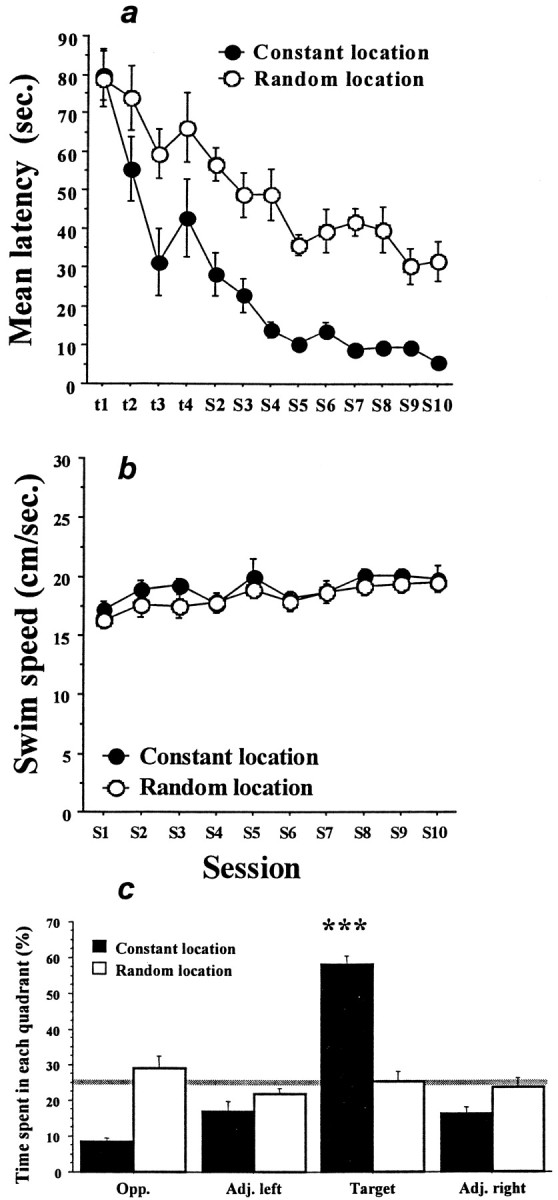Fig. 2.

Acquisition of the learning tasks.A, Swim latencies (mean ± SEM) to find the hidden escape platform for the groups of mice trained in either the spatial task (constant location, filled circles) or the procedural task (random location, open circles). The first four data points (t1–t4) are the values for the individual trials of training session 1. The remaining data (S2–S10) are the means of four daily trials. Although the two groups performed similarly on the first training trial, mice trained in the spatial task showed more rapid and greater improvement overall. B, Swim speeds (mean ± SEM) for the two groups across training sessions. Swim speeds were never different and therefore could not have contributed to the greater reduction in swim times seen in the spatial learning group. C, Probe trial performance. Each bar represents the percentage of swim time spent in one of the four quadrants of the pool during a 90 sec swim with the escape platform removed. Target, Quadrant where the platform was constantly located for the spatial group;Opp., quadrant opposite the
